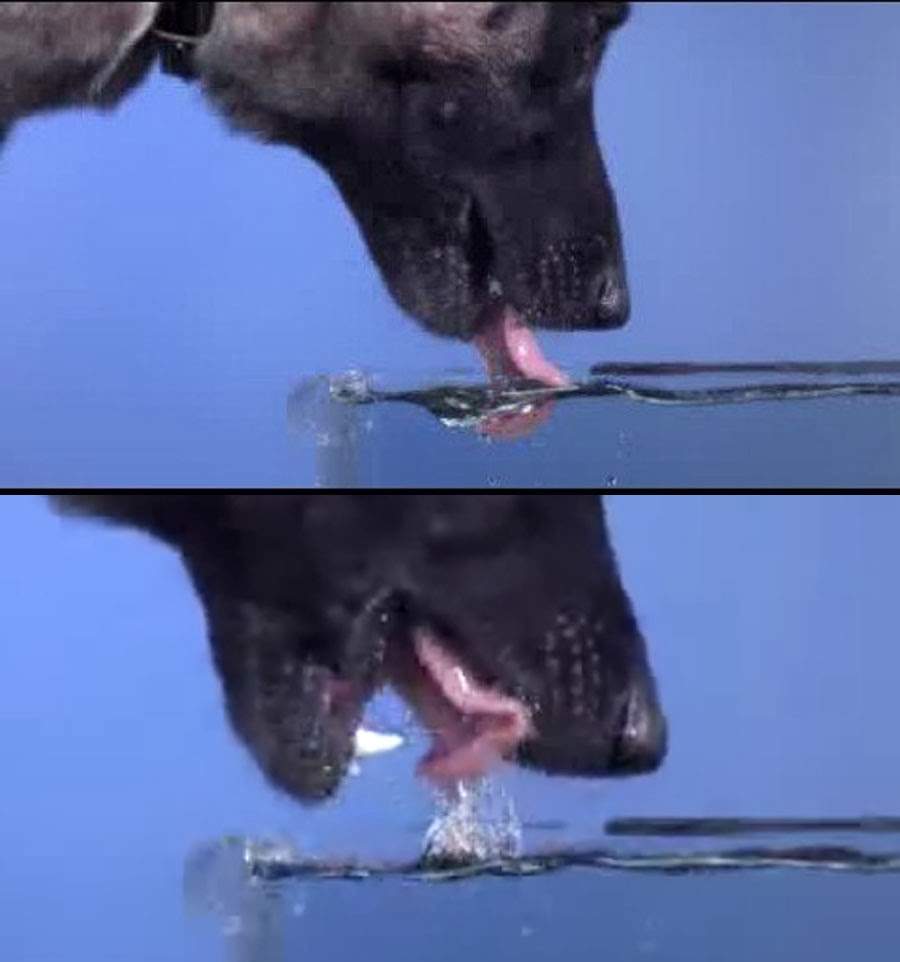Biology concepts – gustatory sense, taste receptors, supertasters
We have discussed recently the reasons organisms taste their food are related to nutritional needs (sweet, umami, salt, fat) and protection from toxins (sour, bitter). Sweet is the exceptional case here because it's the only taste that works across a great range of concentrations. You can sense low levels of sugar, and it just gets sweeter as more sugar is added. For sour, too much is not a great thing – think sour patch kids. And bitter? India pale ales have way too much hops for me.
Paracelsus said that only the dose makes the poison– too much of a good thing can be bad – too much protein leads to hyperaminoacidemia and hyperammonemia (too much amino acid and ammonia in blood). Too much salt can throw ionic balance out of whack, and very bitter tastes suggest a toxin. But too much sweet, no way! Evolution decided there is no such thing as too much sugar – the body wants as much energy (carbohydrate) as it can get.
If this is the case, then why can’t cats taste sweet things? It has been known for a while (2005) that allcat species lack a functional Tas1R2 protein, one part of the sweet receptor (other part is Tas1R3). Cats happen to be obligate carnivores – they only eat meat – so they don’t need to crave carbohydrates – they get enough from metabolizing the compounds in the meat.
Now, a 2012 study has expanded the results to other obligate carnivores. Jiang and his group tested many other species for nonfunctional Tas1R2 protein. Included in the list of animals that can’t taste sweet are the asian short-clawed otter, the spotted hyena, seal lions, dolphins, the fossa, and harbour seals.
Other animals, like dogs, giant pandas, termite-eating hyenas (aardwoles), Canadian otters, and raccoons were found to still have functional Tas1R2 proteins, probably because these animals sometimes eat things other than meat.
The 2012 study of Jiang, and another 2012 study indicate that many seal and sea lion species are double losers – they have lost the use of the Tas1R1 protein as well. To taste umami, the receptor is Tas1R1 + Tas1R3. Yet another 2012 study indicated that 31 different species of bat (fruit, insect, and blood feeding) have lost sweet perception), and vampire bats have lost both sweet and umami (non-functional Tas1R1 and Tas1R2 proteins). Apparently, 2012 was a big year for studying taste loss in animals.
But the kings of poor taste may be the bottlenose dolphins. They have non-functional Tas1R1 and Tas1R2, so no sweet or umami for them, but they have also lost about half of the genes for functional bitter receptors. Why? They swallow their food whole – so taste isn’t a big priority for them.
So cats have no sweet perception, but dogs still have it. But dogs are exceptional in another way. They have a reduced ability to taste salt. Dogs seem to have additional receptors for meat contain chemicals, so they really crave meat. But meat is full of salt, so they don’t have to crave it. It gets weirder though.
We said above that too much of something can be bad, and if dogs eat too much meat, they get too much salt. This can throw all ionic mechanisms into chaos, which includes about every function of every cell. Dogs need to balance their salt intake with their water intake – more salt, then more water to flush it out.
So now we know that taste perception varies across species. How about within a species - do all people taste things similarly? No way, just ask a supertaster.
It was recognized in the 1930’s that some people react to bitter tastes more strongly than other people. A chemical called phenylthiocarbamide (PTC) accidently got loose in a lab, and only some lab members tasted the powder in the air. Now we use a similar chemical called propylthiouracil (PROP, it's safer than PTC) to test if people have a strong bitter taste sense.
About 25% of the population reacts strongly to PROP, these are the supertasters (coined by Dr. Linda Bartoshuk in 1991). Another 15% of people don’t taste it at all. These are the non-tasters. But many people lie somewhere in between – medium tasters.
However, as Dr. Bartoshuk continued researching, it became apparent that there was more going on. Here is where genetics enters the picture. The bitter receptor (Tas2R38, one of 25 or so bitter recptors) for PROP or PTC comes as several different alleles; one which reacts strongly (T), one that reacts weakly (t), and five that are in between and much more rare.
There is basic mendelian dominance here. If you inherited 2 T alleles, you were considered a supertaster. Two t alleles made you a non-taster, and a Tt genotype landed you in the middle. But there was too much variation. Some people with Tt reacted strongly, while others with tt reacted strongly to other tastes (sweet or sour or even umami).
2013) has been part of research that has now shown that Tas1R1 (part of umami receptor) also comes in different forms, and demonstrates different intensities of reaction. There is also a paper that suggests that because people with sensitive bitter receptors also react strongly to other tastes, there must be a central pathway for taste perception in the brain that is turned up in supertasters.
Because some people react strongly to more than just PROP, scientists changed the definition of supertaster to those that had both increased sensitivity to PROP/PTC and increased sensitivity to other tastes or food qualities. So you have to define now how your supertaster - pST is a supertaster for PROP alone, while gST is for increased sensitivity to several tastes.
This still can’t account for all the variations in taste intensity seen in different people. Dr. Bartoshuk also discovered that people can have different numbers of taste buds. Taste buds house the taste cells that have the taste receptors; more buds means more receptors means more intense taste.
You can easily test if you have a sensitivity to PROP using small pieces of paper soaked in PROP, but you can also see if you have an above average number of taste buds. Take some blue food dye and a ring reinforcer (those little circles you put on papers so the three ring binder won’t tear through the hole punch hole). Put a drop of dye on your tongue and rinse. The darker blue areas are the filliform papillae; they don’t have taste buds.
The lighter staining, round areas are the fungiform papillae; this is where the taste buds are located. Put the ring reinforcer on your tongue and count the number of fungiform papillae in the open circle. If you count more than 30, you're probably a supertaster.
The number of fungiform papillae is genetically controlled, as is the expression of different receptor alleles, but the mechanism hasn't been worked out yet for taste bud number. The take home message – both the number of receptors and the alleles of the receptors determine if you are a supertaster or not.
On the other end are the non-tasters. If you count fewer than 10 fungiform papillae in the circle on your tongue, you are most likely a non-taster. On average, humans have about 10,000 taste buds. This is many more than dogs (avg. 1700) or cats (avg. 470). Supertasters may have more than 25,000, while non-tasters may have fewer than 5,000. I have no idea how many taste buds a supertasting dog has.
Non-tasters are said to be taste blind, either generally (ageusia, from Latin a = without and geusia = taste), or just to specific tastants (specific ageusia), like PROP for example. But don’t feel bad for the non-tasters; this doesn’t condemn them to tasting nothing. It just takes more for them to get their craving satisfied.
On the other hand, supertasting isn’t always super. Bitter things may be too bitter to enjoy. In general, supertasters survive better in new environments because they are less likely to eat something toxic. But non-tasters are safer in known environments, because they can find more foods that they can enjoy enough to eat. But always remember, this is a complex system that can be overcome by learning. Some people consider some things too sweet, just as supertasters can learn to enjoy very bitter foods.
One last tidbit – for some unknown reason, the myth that the tongue has specific areas for certain tastes is still being propagated. This just isn’t so. There are places where certain receptors may be more or less numerous, but you can sense all tastes on all parts of your tongue. I hope that settles that.
But even this is an incomplete picture of taste. Next week we will discover that you don’t taste with just your tongue. Heck, an insect tastes things, and it doesn’t even have a tongue!
Rawal S, Hayes JE, Wallace MR, Bartoshuk LM, & Duffy VB (2013). Do polymorphisms in the TAS1R1 gene contribute to broader differences in human taste intensity? Chemical senses, 38 (8), 719-28 PMID: 24000232
Zhao H, Xu D, Zhang S, & Zhang J (2012). Genomic and genetic evidence for the loss of umami taste in bats. Genome biology and evolution, 4 (1), 73-9 PMID: 22117084
Sato JJ, & Wolsan M (2012). Loss or major reduction of umami taste sensation in pinnipeds. Die Naturwissenschaften, 99 (8), 655-9 PMID: 22777285
Jiang P, Josue J, Li X, Glaser D, Li W, Brand JG, Margolskee RF, Reed DR, & Beauchamp GK (2012). Major taste loss in carnivorous mammals. Proceedings of the National Academy of Sciences of the United States of America, 109 (13), 4956-61 PMID: 22411809
For more information or classroom activities, see:
Rawal S, Hayes JE, Wallace MR, Bartoshuk LM, & Duffy VB (2013). Do polymorphisms in the TAS1R1 gene contribute to broader differences in human taste intensity? Chemical senses, 38 (8), 719-28 PMID: 24000232
Zhao H, Xu D, Zhang S, & Zhang J (2012). Genomic and genetic evidence for the loss of umami taste in bats. Genome biology and evolution, 4 (1), 73-9 PMID: 22117084
Sato JJ, & Wolsan M (2012). Loss or major reduction of umami taste sensation in pinnipeds. Die Naturwissenschaften, 99 (8), 655-9 PMID: 22777285
Jiang P, Josue J, Li X, Glaser D, Li W, Brand JG, Margolskee RF, Reed DR, & Beauchamp GK (2012). Major taste loss in carnivorous mammals. Proceedings of the National Academy of Sciences of the United States of America, 109 (13), 4956-61 PMID: 22411809
For more information or classroom activities, see:
Supertasters –




















